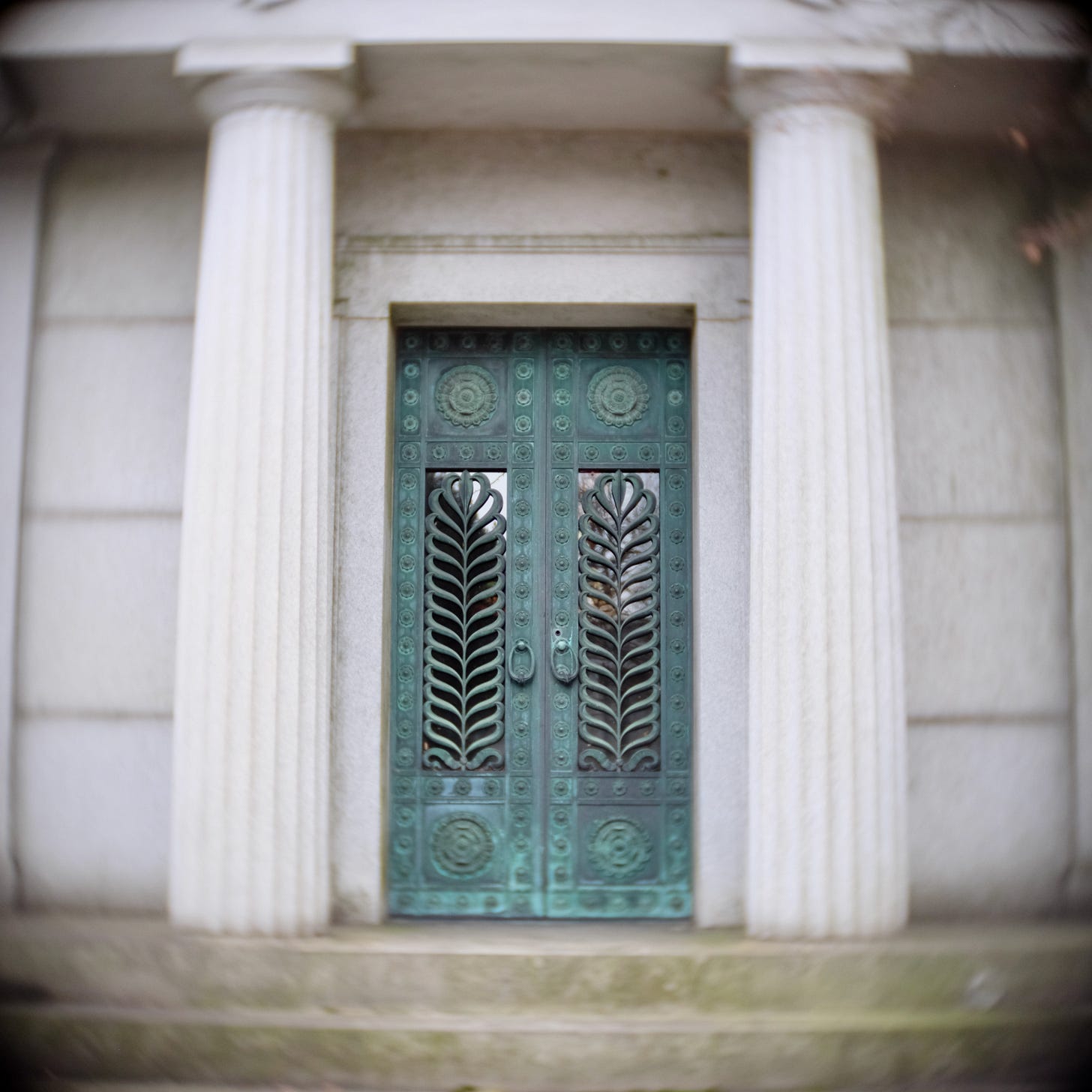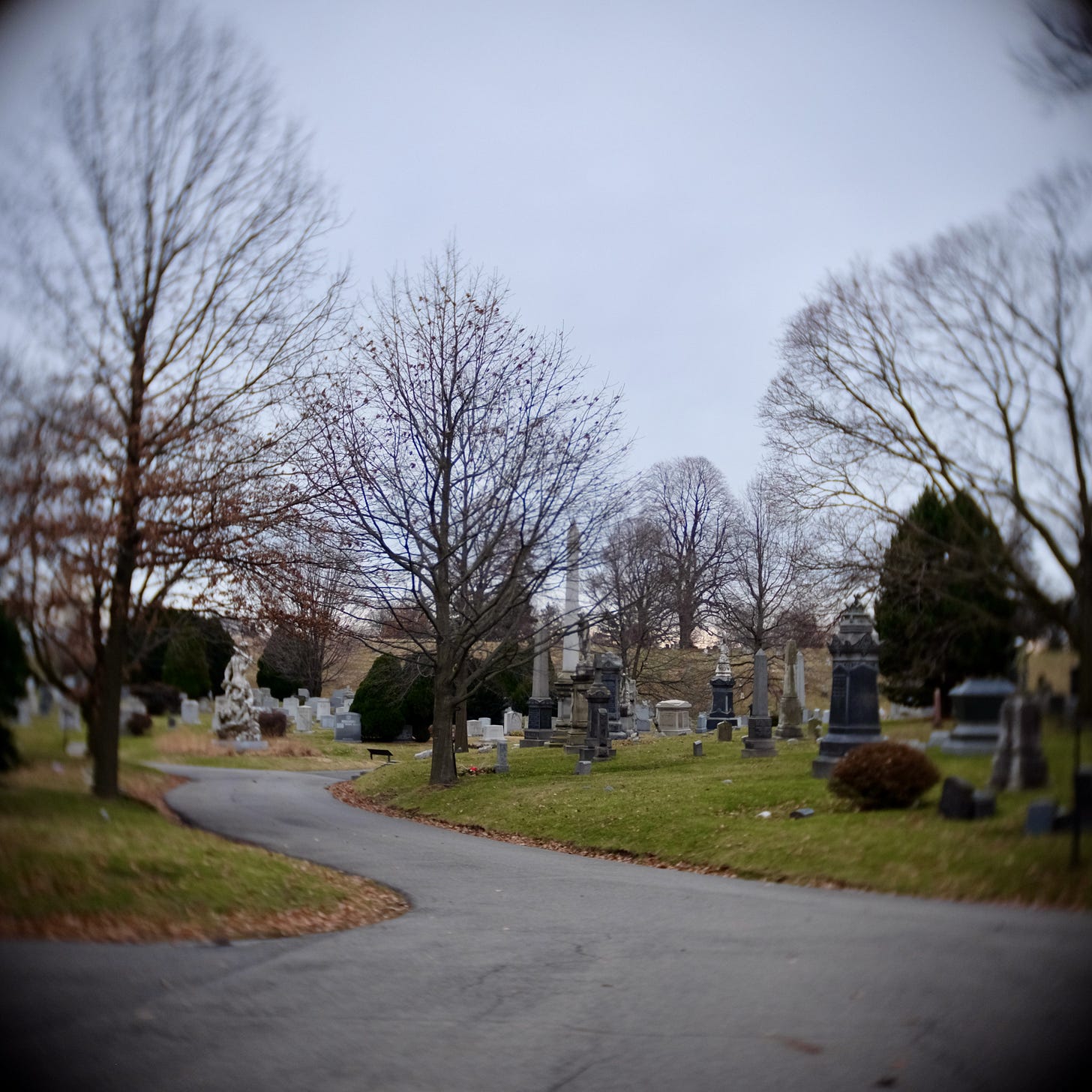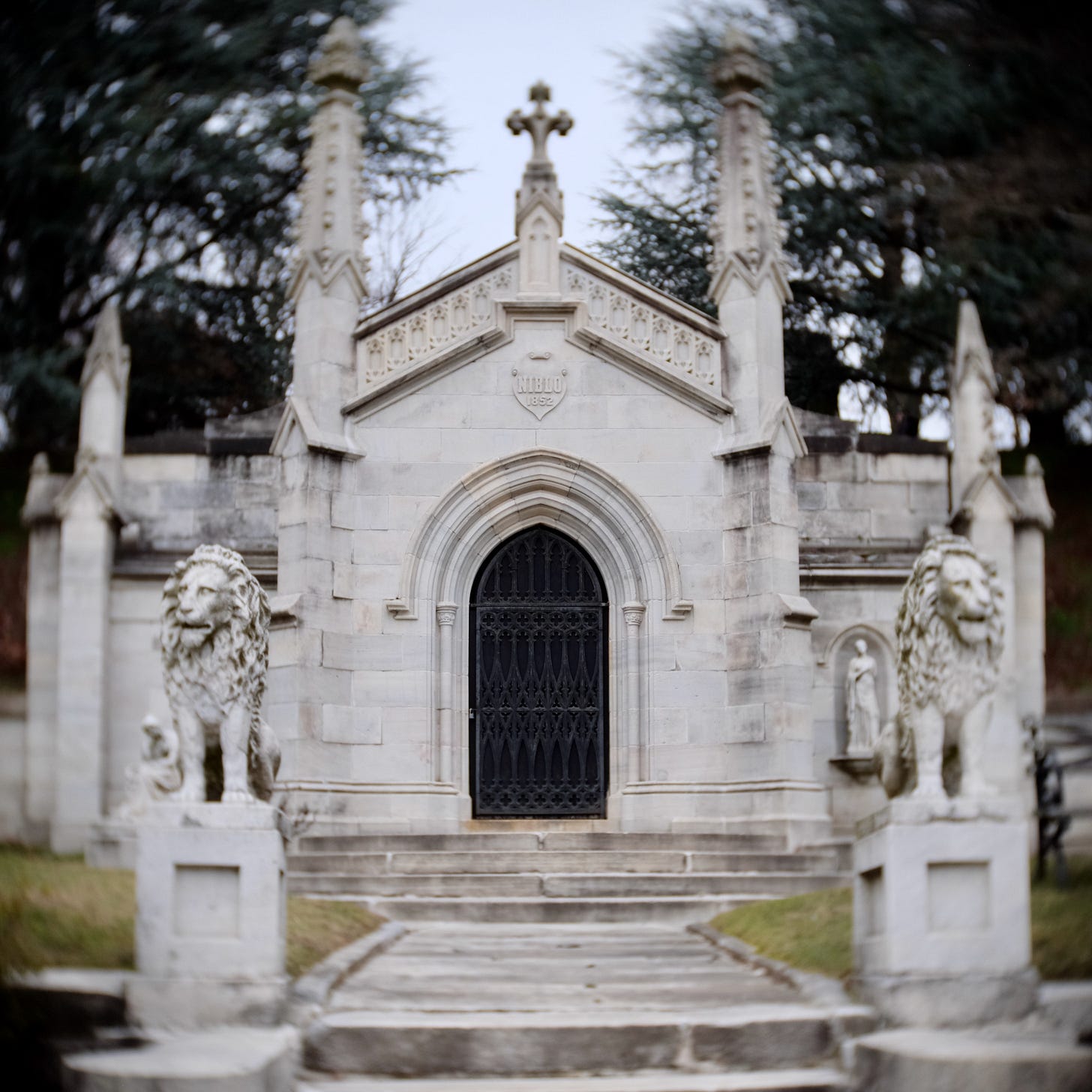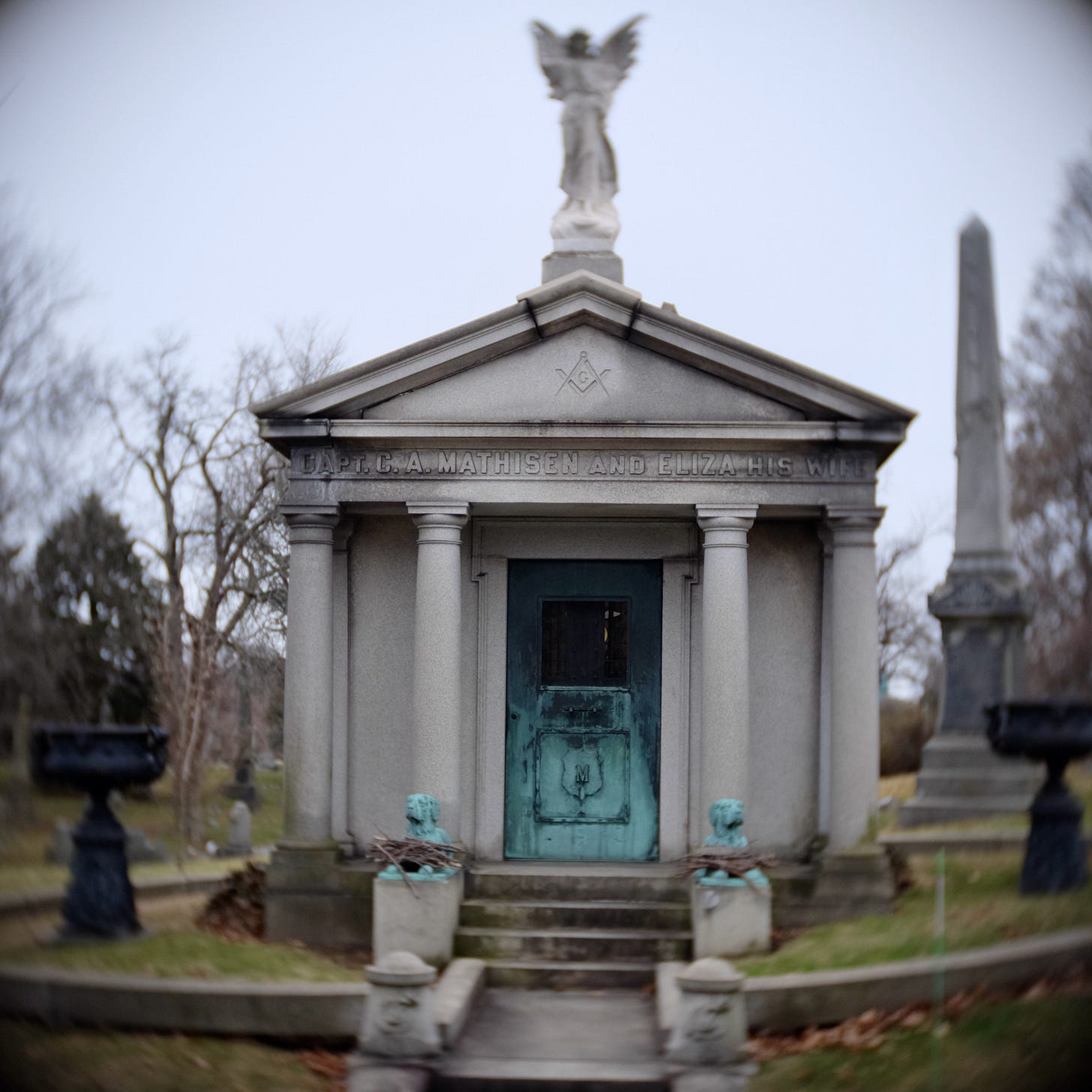One of the things I set aside during these last few years of living in survival mode was my photography. It actually started soon after my son was born in 2018 but it took me a while to realize I had put it on the back burner because I always had my phone on me. I was taking lots of pictures of him, food I was cooking, our cats — but I wasn’t taking photographs in a way that felt meaningful to me. It took going to New York for a long weekend on my own — to spend time with two of my favorite people in the world, to have some space and time to myself — to reconnect with photography.
It happened quickly. I went to Green-Wood Cemetery in Brooklyn with my friend, pulled out my camera, put on my favorite manual lens, took photos for an hour or so, and instantly felt connected to a deeper part of myself. Photography for me, especially when I use a manual lens, is like meditation in snippets. Each time I take a photo I stop, take a breath, compose, focus, hold my breath for a moment, stand as still as I can without tensing up, and click the shutter. The whole experience might last ten seconds.
I learned photography back in the days of the darkroom when film was the only option. This was also during the time of card catalogs, tape decks, beepers and shopping malls. Technology has changed a lot since then, not least of which was the creation of endless options for nearly everything. Over the years, as my relationship to photography evolved, I’ve had to devise creative limitations for myself as the sheer magnitude of options would stop me in my tracks.
I went from being an introverted fourteen year old relishing the quiet and focus of the darkroom, to being in my twenties and thirties and wondering what exactly it was that I loved about photography. I felt disconnected from my digital camera and auto focus lenses so for a while I shot film exclusively. I didn’t set out to be a purist about it, to banish my digital camera for all eternity, but sharply limiting my options helped me slow down and ground myself again in the experience of taking a picture.
When shooting film I couldn’t just spray and pray, hoping a handful of images would come out looking good — I had to actually take my time and compose the image I was seeing. I had to train my eye to focus quickly, to trust that I got it or if I didn’t, that I would learn from it and do better the next time. Over the two years that I mostly shot film — an experiment I never meant to go on for so long but am grateful it did — I retrained my eye to become better at focusing, I learned to slow down and breathe, and the muscle memory of clicking the shutter just one or two times per image stayed with me even as I began to shoot digital again.
Nowadays my favorite combination is my digital Fuji body with a manual CCTV lens. My husband found me this lens when I was lamenting missing the look of my Holga film camera — the square format, the weird swirls and blur in the background that would show up unexpectedly — it was a camera with not a single bell nor whistle, you had to guess at the focus distance and hope you got it right or else the image would be blurry, which you’d find out three weeks later when you finally got the prints back. It wasn’t a practical camera by any means, but I loved the other worldly look to the images it made.
My CCTV lens, a lens that is usually used on security cameras, has a similar vibe but allows me more control. It loves a narrow focus and it swirls the background, almost creating movement in a still image. Unlike with the Holga, I like that I can see exactly what the image will be, adjusting the aperture depending on how much swirl I want, and most importantly, that I don’t have to wait weeks to see the images. My love of film lies mostly in my Polaroid these days. The instant gratification is real.










